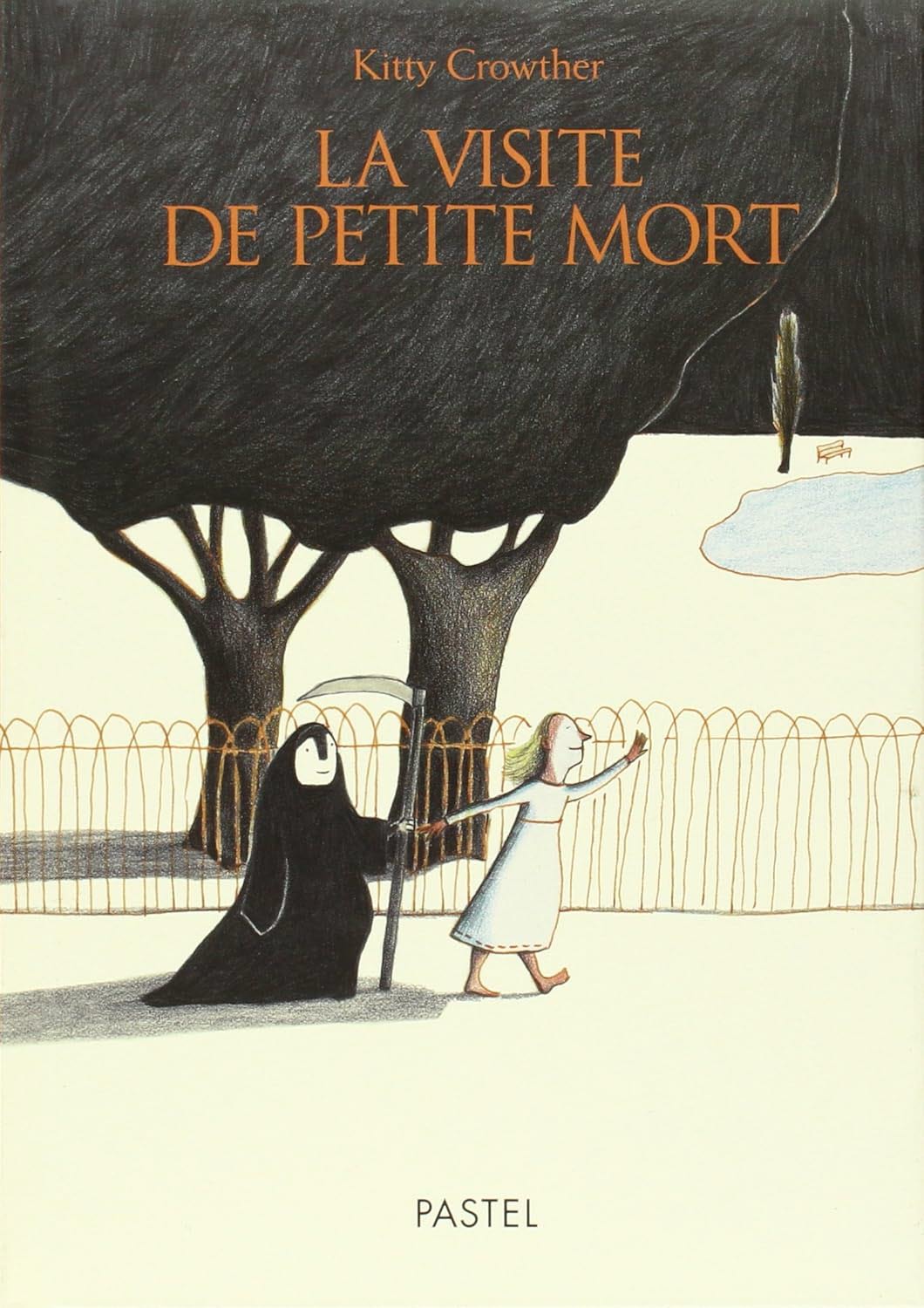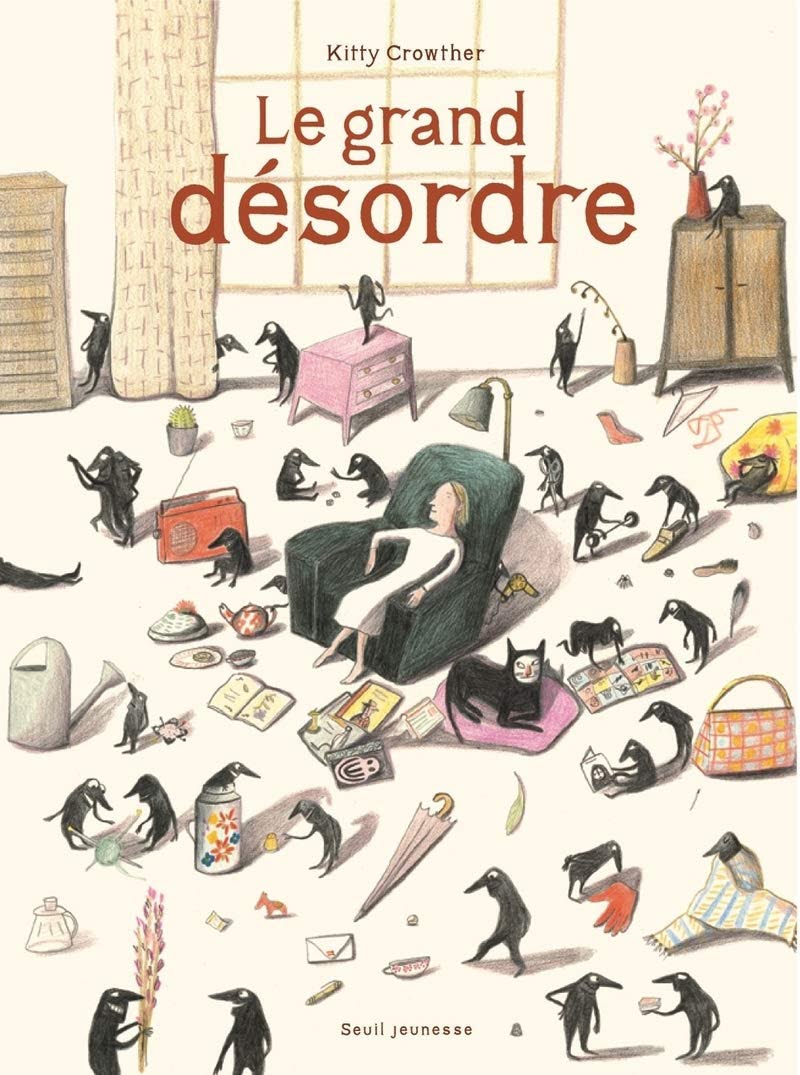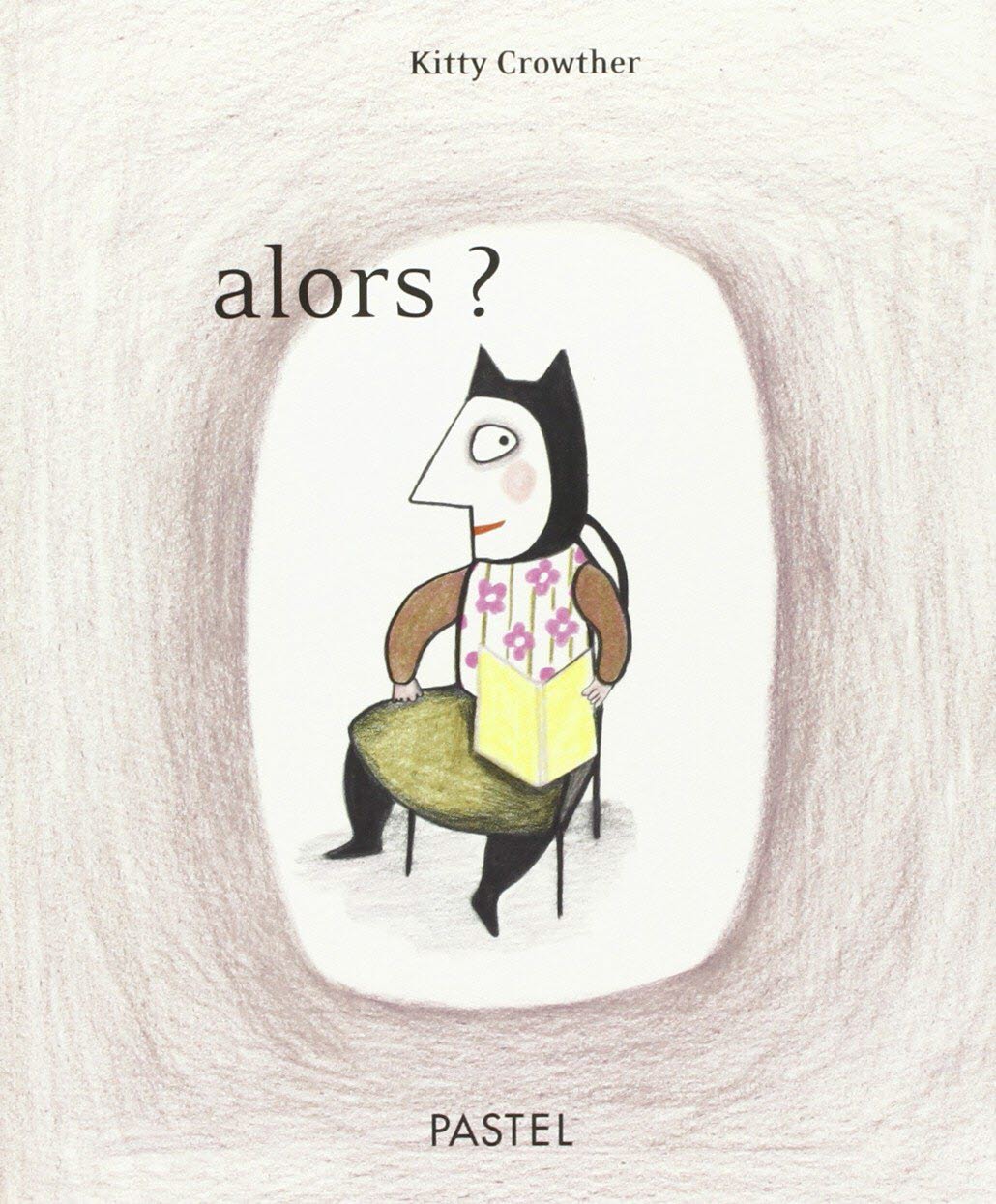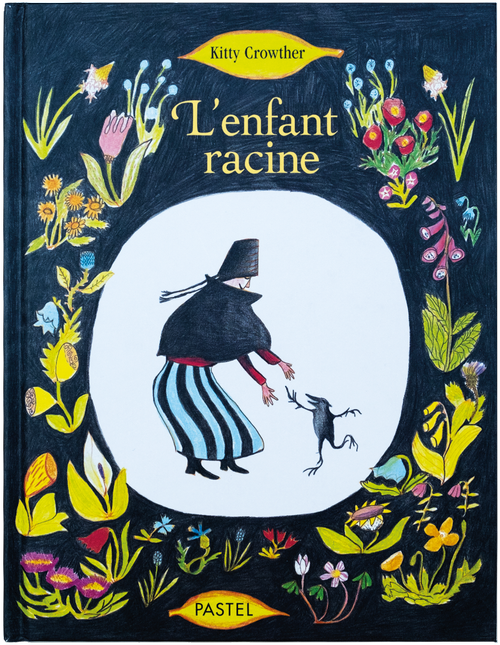Master of line and atmosphere
Kitty Crowther is an illustrator and author, known all over the world for her inimitable picture books. She invites us to enter a whole new world of imagery using a limited repertoire of tools, principal among them pencil, Indian ink and coloured pencils. Crowther has published more than forty books, all permeated with humanism and an unconditional loyalty to children.
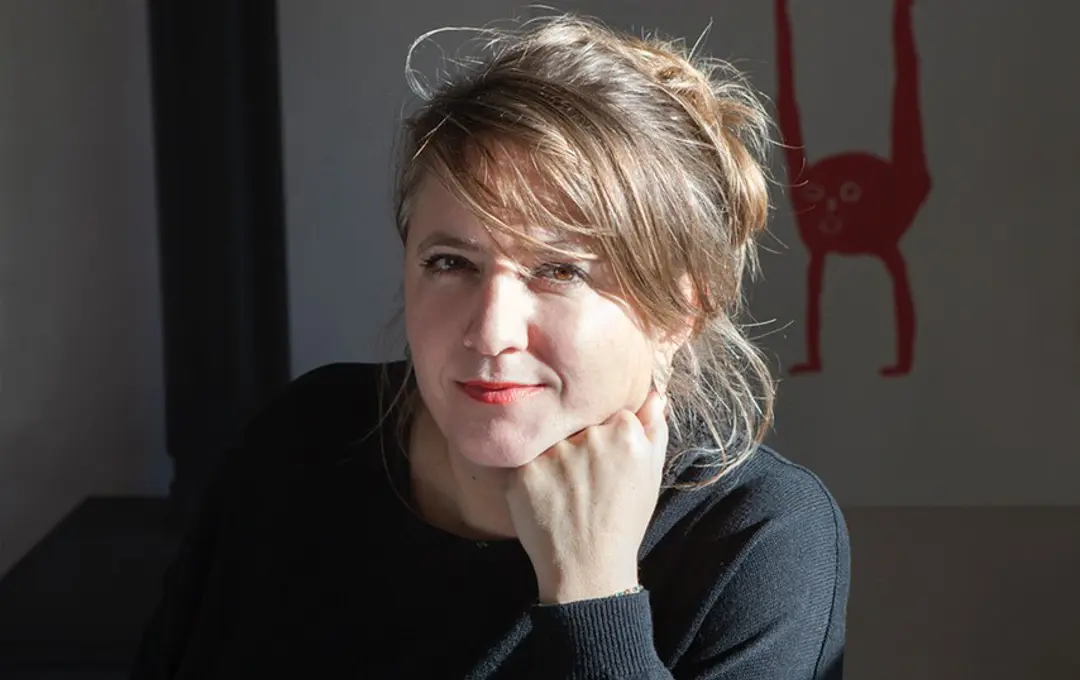 Photo: Lydie Nesvadba
Photo: Lydie NesvadbaQuick facts
The jury’s motivation
Kitty Crowther is the master of line but also of atmosphere. She maintains the tradition of the picture book while transforming and renewing it. In her world, the door between imagination and reality is wide open. She addresses the reader gently and personally, but with profound effect. In her deeply felt empathy with people in difficulty, she shows ways in which weakness can be turned into strength. Humanism and sympathy permeate and unify her artistry.
Illustrator from Belgium, born 1970.
Kitty Crowther is the master of line but also of atmosphere. She maintains the tradition of the picture book while transforming and renewing it. In her world, the door between imagination and reality is wide open. She addresses the reader gently and personally, but with profound effect. In her deeply felt empathy with people in difficulty, she shows ways in which weakness can be turned into strength. Humanism and sympathy permeate and unify her artistry.
In Kitty Crowther’s books, text and pictures form an integral whole. Her principal works are her own picture books, including L´enfant racine (2003), La visite de Petite Mort (2004), Le grand désordre (2005) and the Poka & Mine series (2005, 2006, 2007, 2010).
She addresses readers personally using a limited repertoire of tools, principal among them pencil, ink and coloured pencils. Facial expressions, posture and atmosphere are captured with unfailing precision. In Kitty Crowther’s world there are no basic stereotypes. The landscapes in which the stories are set resemble the ones we know, but Kitty Crowther sees beyond them to a world richer in possibilities than we imagine.
One of the cornerstones of her authorship is to show how weakness can be turned into strength. Her loyalty to children is unconditional. The sympathy and intense empathy Kitty Crowther shows with her fictional characters is an expression of the deep humanism that runs through all her works.
Interview with Kitty Crowther
Shows how weakness can be turned into strength
This text was written in 2010 by members of the award jury.
Kitty Crowther is an illustrator and author who lives and works in Belgium. She was born in Brussels on 4 April 1970 to an English father and a Swedish mother. Kitty Crowther is the author of some 35 titles, most of which were first published in Belgium or France. Her works are fast being translated to other languages.
Her principal works are her own picture books, including L´enfant racine (2003), La visite de Petite Mort (2004), Le grand désordre (2005) and the Poka & Mine series (2005, 2006, 2007, 2010), but she has also illustrated works by other authors such as Toon Tellegen, Carl Norac and André Nève.
In Kitty Crowther’s books, text and pictures form an integral whole. However, her artistry can also be described from a purely pictorial viewpoint. She addresses readers personally using a limited repertoire of tools, principal among them pencil, Indian ink and coloured pencils. Kitty Crowther’s masterful use of these simple materials enables her to expand her artistic expression in all directions. She invites us to enter a whole new world of imagery.
The books are often elegantly staged, with light and lines shifting to reflect events in the narrative. In Alors? (2005) we can see the shadows lengthening on each page spread as day turns to evening. Facial expressions, posture and atmosphere are captured with unfailing precision. A slight turn of the body, a raised eyebrow, a hint of a finger movement, and the entire meaning of a scene changes. The reader feels the breathing and heartbeat of the images. Kitty Crowther describes her own method as spontaneous. Portraying life with the freshness of line drawing and the direct appeal of images is what comes most naturally to her. She prefers starting over to revising.
It’s easy to see why Kitty Crowther calls herself a storyteller. Her imagination and creative powers are constantly active. She has endless volumes to tell. Not only stories, straightforward or with a twist; she also wishes to convey the beauty and magic of the world. The landscapes in which the stories are set resemble the ones we know, but Kitty Crowther sees beyond them to a world richer in possibilities than we imagine. Animals and plants, even geology, have a soul. Together with us, they form an interwoven world without hierarchies. In Annie du lac (2009), three islands in a lake turn out to be three young giants who open up a route for Annie out of loneliness to love and community. Every living thing is valuable and worth taking care of. The Root Child in L´enfant racine (2003) is an enigmatic creature, perhaps the very root of life, who gives meaning and direction to the life of Leslie, the protagonist. It is noteworthy that, in this capacity, the Root Child is a complex character, both lovable and trying. In Kitty Crowther’s world there are no basic stereotypes.
Kitty Crowther herself talks about having made the gnomes and giants of fairytale tradition her own. In this sense, she is preserving a tradition. At the same time, she is renewing the tradition by bringing contemporary issues and life into contact with the forces of myth and legend.
Kitty Crowther’s books are often about taking control of your life. Le grand désordre (2005) is a slightly bizarre story about what is important in life. Émilienne, the protagonist, has obvious problems bringing order to her possessions and her life. We see her home invaded by disorder, personified by small creatures that have taken over. Her friend Sylvania has the opposite problem: she is a tidy freak. The tension between the two friends drives the story, and the route to mutual understanding takes some winding and surprising paths.
Family conflict, personal shortcomings, loneliness and death. Kitty Crowther doesn’t duck the challenge of portraying difficult subjects. Rather, she has made it part of her mission to take that plunge. However, the darkness present in many of her books never turns to deepest despair. She offers hope and sets out options.
La visite de Petite Mort (2004) is one such example. The Little Death meets a girl who doesn’t show him the silent mistrust he is accustomed to, but instead welcomes him as a friend, a playmate even. The encounter changes and brightens up his sombre existence, and he sees his role in a new light. This book is also a good example of Kitty Crowther’s distinctive mix of humour and melancholy.
Loneliness is a recurring theme. Kitty Crowther describes a “dynamic” kind of loneliness that breeds the creativity and energy to conquer oneself. For instance in Moi et Rien (2000), a sensitively told story about the imaginary friend, called Nothing (Rien), in whose company it is possible to develop and become someone. One of the cornerstones of Kitty Crowther’s authorship is to show how weakness can be turned into strength.
It is fascinating to note the simple techniques that Kitty Crowther uses to build up suspense in her books for the youngest readers. This can be clearly seen in Alors? (2005). The very lack of events, the waiting, becomes a focus of suspense in its own right that drives the story forward. The Poka & Mine books (2005, 2006, 2007, 2010) all contain a twist that interrupts a straightforward progression and raises the temperature of the story prior to a soft landing with an amicable resolution. The same goes for Scritch scratch dip clapote (2002), in which Kitty Crowther also depicts a touching, recognizable tenderness and love between child and parent. Her loyalty to children is unconditional.
The sympathy and intense empathy Kitty Crowther shows with her fictional characters is an expression of the deep humanism that runs through all her works.
If I had to choose one word to describe myself, it would be ‘storyteller’. I’ve been steeped in stories from as far back as I can remember. Books were my refuge, my bubble

Discover our laureates
The Astrid Lindgren Memorial Award is awarded to authors, illustrators and narrators, but also to people or organizations that work to promote reading.
Find out more about the laureates
Children have the right to great stories
To lose yourself in a story is to find yourself in the grip of an irresistible power. A power that provokes thought, unlocks language and allows the imagination to roam free. The Astrid Lindgren Memorial Award was created in 2002 by the Swedish government to promote every child’s right to great stories.
Find out more about the award